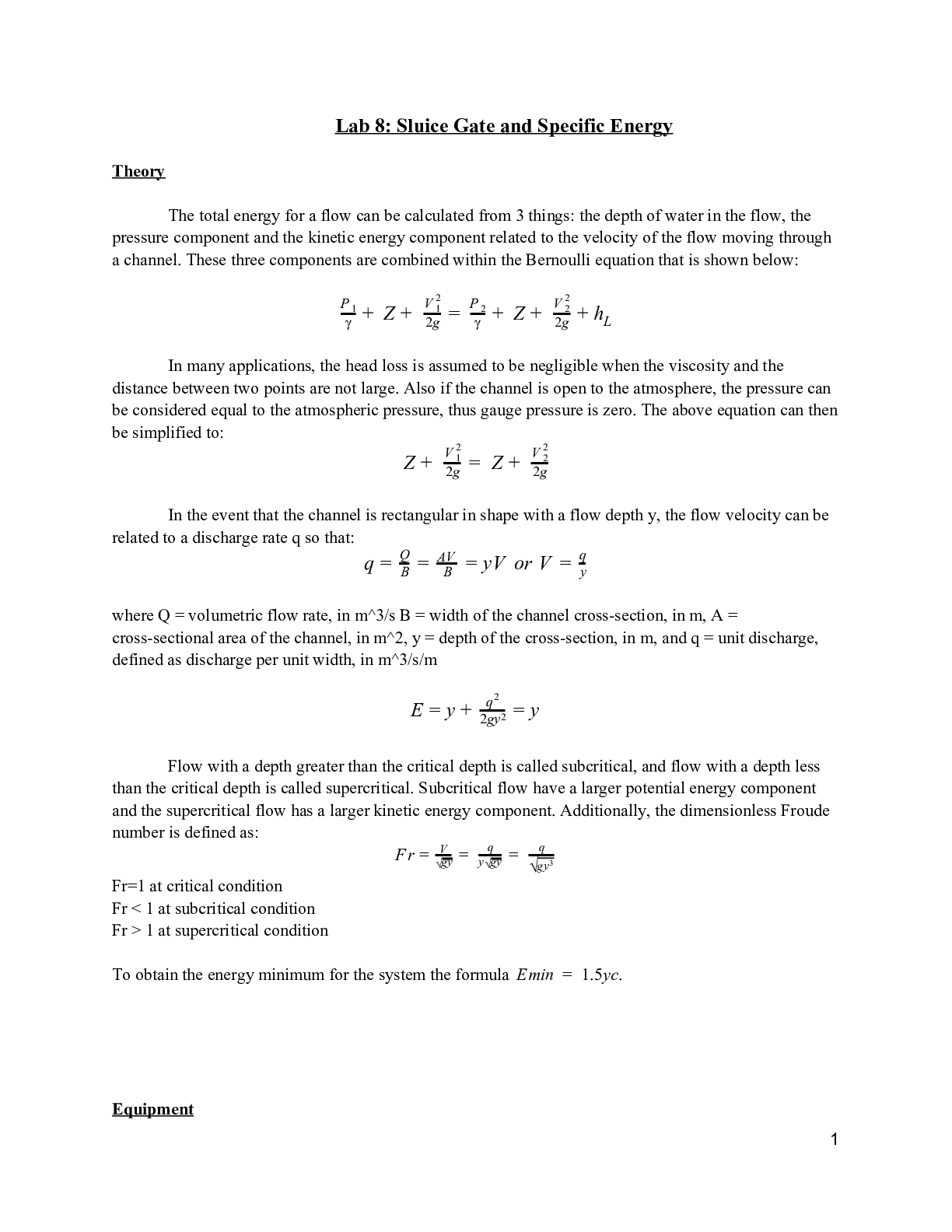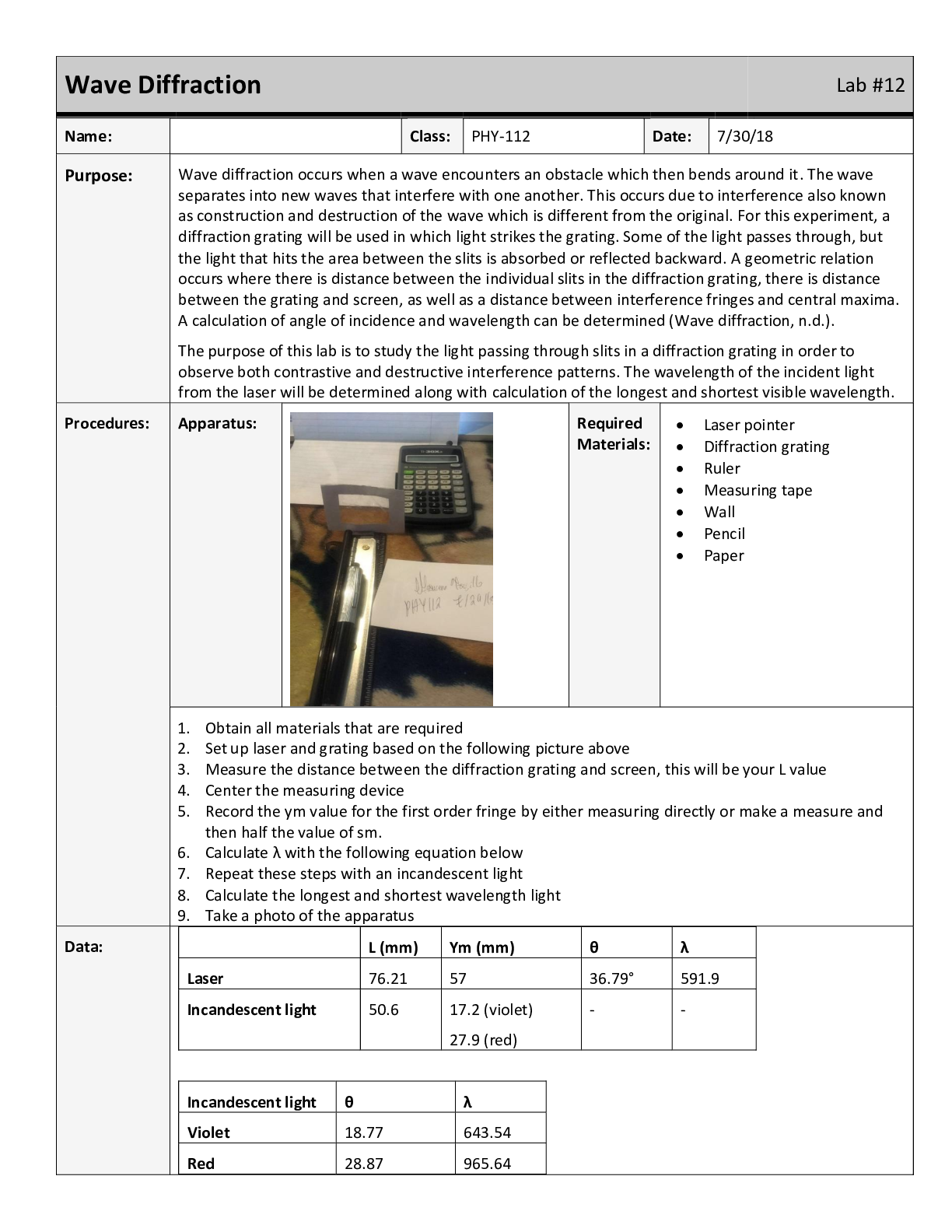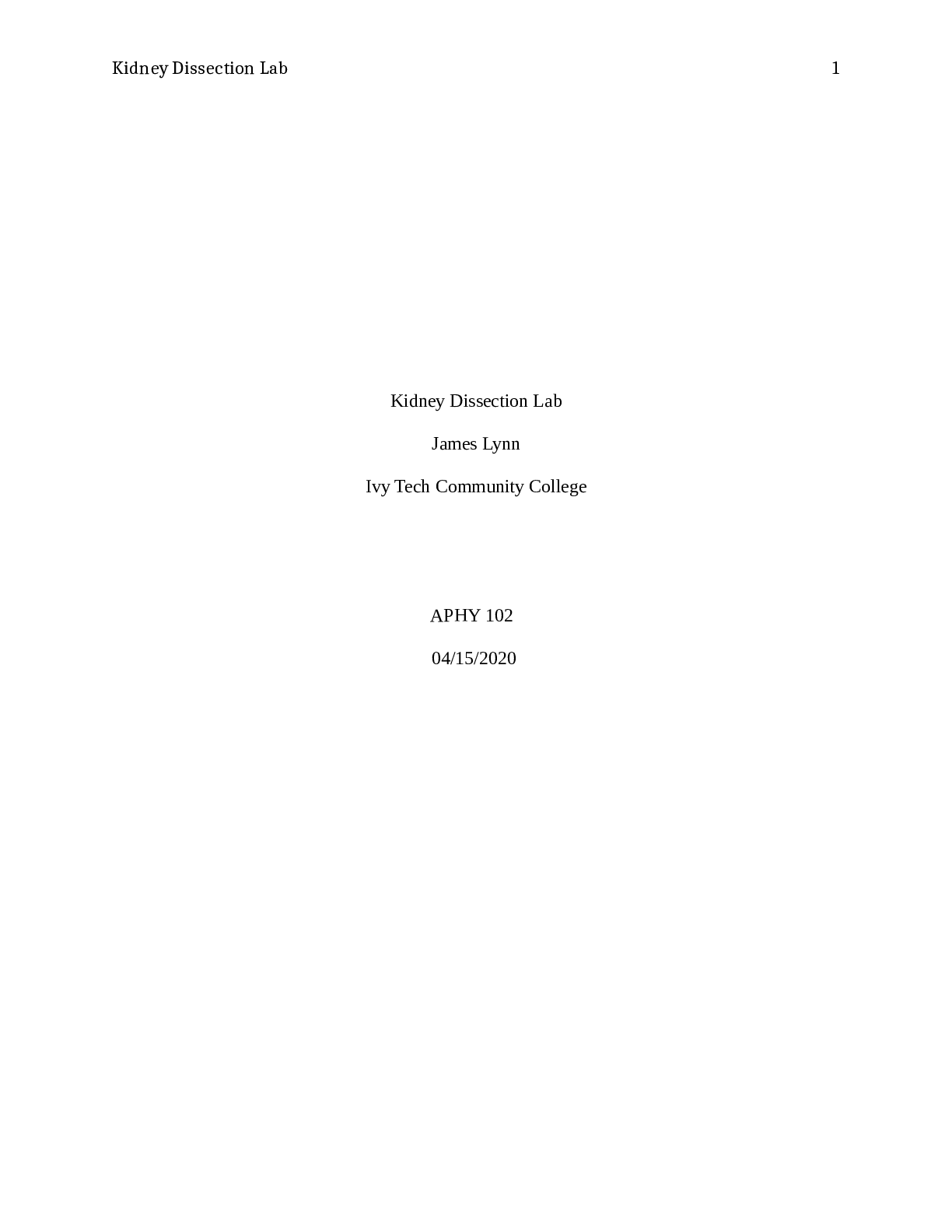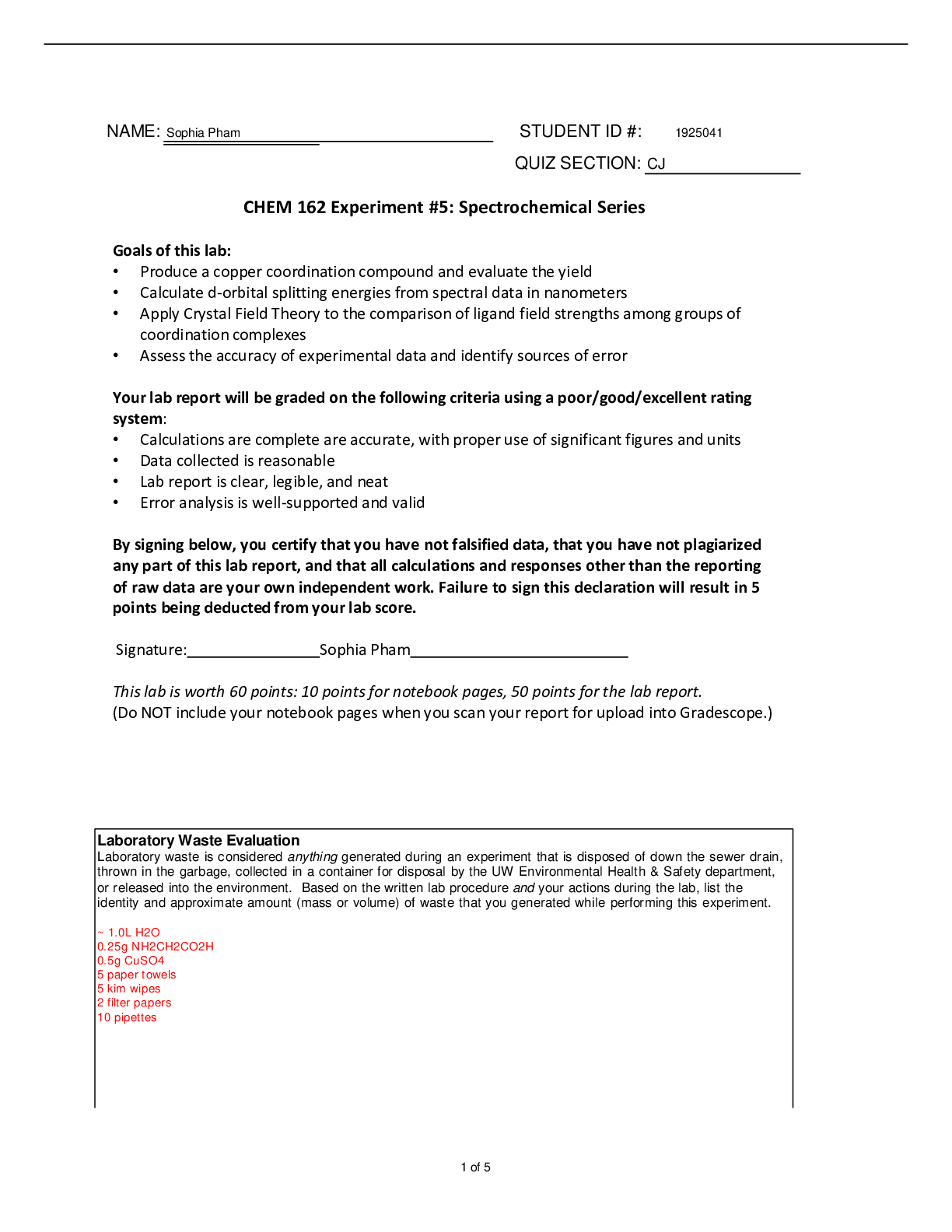Chemistry > Lab Report > Oxidation-Reduction Activity Series. Lab 7 Report. Exercise 1: Describing an Oxidation-Reduction and (All)
Oxidation-Reduction Activity Series. Lab 7 Report. Exercise 1: Describing an Oxidation-Reduction and Exercise 2: Creating an Activity Series. All Questions Answered.
Document Content and Description Below
Oxidation-Reduction Activity Series Exercise 1: Describing an Oxidation-Reduction Reaction Data Table 1. Redox Reaction of Copper and Silver Nitrate. Questions A. Define oxidation, reduction, a ... nd oxidation number. Describe how oxidation and reduction affect the oxidation number of an element. B. Define oxidizing agent, reducing agent, and spectator ion. C. In the reaction of copper and silver nitrate, a new substance appeared in the test tube. Describe the physical appearance of the substance and identify its chemical formula. D. Given an activity series in which the most active metals are at the top of the list and the least active metals are at the bottom of the list, would copper be listed above silver or would silver be listed above copper? Support your answer with data from Data Table 1. E. Solid copper sulfide and silver nitrate react to form copper (II) nitrate and solid silver sulfide. Write a balanced chemical equation that describes the reaction. Identify the oxidation number of each element in the reaction. (You do not need to include the total contribution of charge.) Is this reaction a redox reaction or a non-redox reaction? Explain your answer. Exercise 2: Creating an Activity Series Data Table 2. Redox Reactions of Copper, Lead, and Zinc. Solidmetal Well ID Solution Immediate observations 30 Minute Observations Cu A1 Pb(NO3)2 A2 Zn(NO3)2 Pb B1 CuSO4 B2 Zn(NO3)2 Zn C1 CuSO4 C2 Pb(NO3)2 Data Table 3. Potential Redox Reactions and Chemical Equations. Metal and Metallic Solution Reaction Occurred? Chemical Equation Cu + Pb(NO3)2 Cu + Zn(NO3)2 Pb + CuSO4 Pb + Zn(NO3)2 Zn + CuSO4 Zn + Pb(NO3)2 Questions A. List each of the metals tested in Exercise 2. Indicate the oxidation number when each element is pure and the oxidation number when each element is in a compound. B. Which of the metals in Exercise 2 was the strongest oxidizing agent? Was there an instance when this metal also acted as a reducing agent? Explain your answer using data from Data Table 3. C. Which of the metals in Exercise 2 was the strongest reducing agent? Was there an instance when this metal also acted as an oxidizing agent? Explain your answer using data from Data Table 3. D. How does ease of oxidation correlate with activity? Do highly active metals tend to donate electrons or accept electrons from other metals? E. Create an activity series for copper, lead, and zinc. Place the most active metal at the top of the list. [Show More]
Last updated: 2 years ago
Preview 1 out of 5 pages
.png)
Buy this document to get the full access instantly
Instant Download Access after purchase
Buy NowInstant download
We Accept:

Reviews( 0 )
$12.00
Can't find what you want? Try our AI powered Search
Document information
Connected school, study & course
About the document
Uploaded On
Apr 20, 2021
Number of pages
5
Written in
All
Additional information
This document has been written for:
Uploaded
Apr 20, 2021
Downloads
0
Views
159





.png)




.png)




.png)




